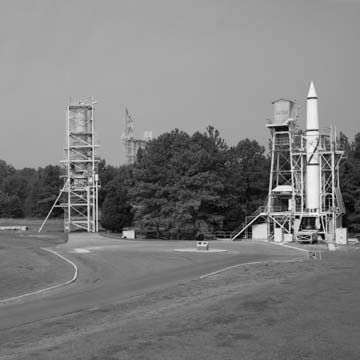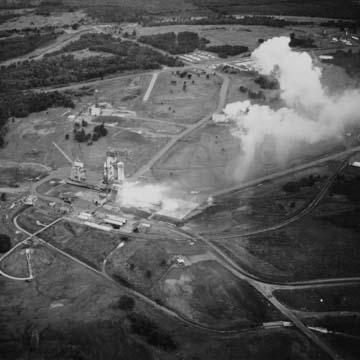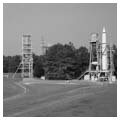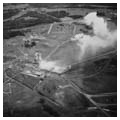Together with government facilities in Florida, Texas, and New Mexico, the research complex now encompassed by the Marshall Space Flight Center on the outskirts of Huntsville has played a key role in the development of the American space program since World War II.
During the war, the Huntsville Arsenal, the Huntsville Depot, and the Redstone Ordnance Plant, all established by the U. S. Army on the southern outskirts of Huntsville, served as a center for the manufacture and storage of ordnance, with particular emphasis on chemical warfare. In 1949, these three facilities were combined as the Redstone Arsenal. In the early 1950s, following a period of demobilization, the Army selected Redstone to become a research and development center for its guided missile program. A group of prominent rocket scientists under the overall direction of space exploration visionary Dr. Wernher von Braun relocated to Redstone as part of the Army Ballistic Missile Agency (ABMA). During this era, Redstone played a critical role in the development of the U.S. ballistic missile and space program. Established as a NASA facility in 1960, Marshall Space Flight Center (MSFC) was created from personnel, buildings, and structures that were formerly part of the Army’s Ballistic Missile Agency.
The most significant large-scale structures at MSFC used for testing Army and NASA rockets from the early 1950s through the 1970s include the Redstone Test Stand (c. 1959), the Static Test Tower (1953–1954), the Saturn Static Test Stand (1961), and the Dynamic Test Stand (1963). In the 1960s, MSFC was critical in the development of U.S. rocket systems capable of space exploration, leading to the successful Gemini 11 moon landing in 1969. In the 1970s and 1980 MSFC continued to serve as a research and development facility with important roles in several key programs, including Space Lab, the Space Shuttle, and the Hubble Space Telescope.
References
EDAW, Inc. Historical Assessment of Marshall Space Flight Center. Historic American Engineering Record, Division of Prints and Photographs, Library of Congress, Washington, D.C., 2004.




